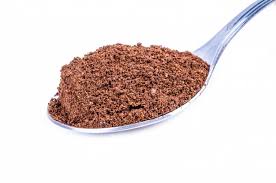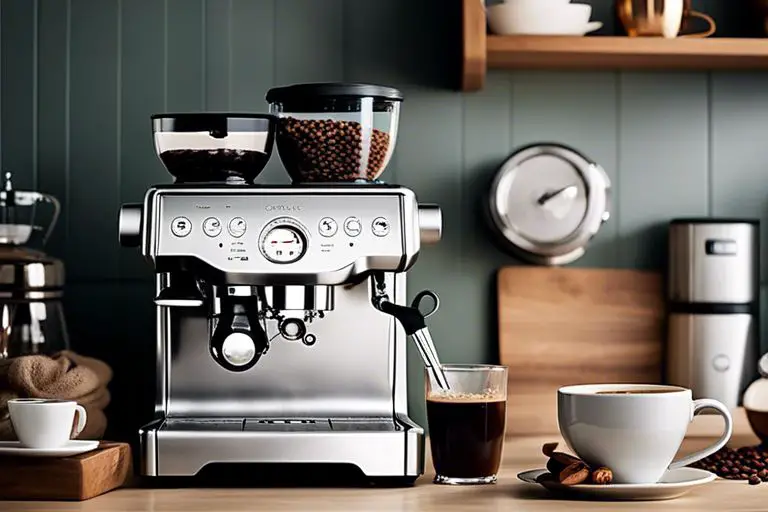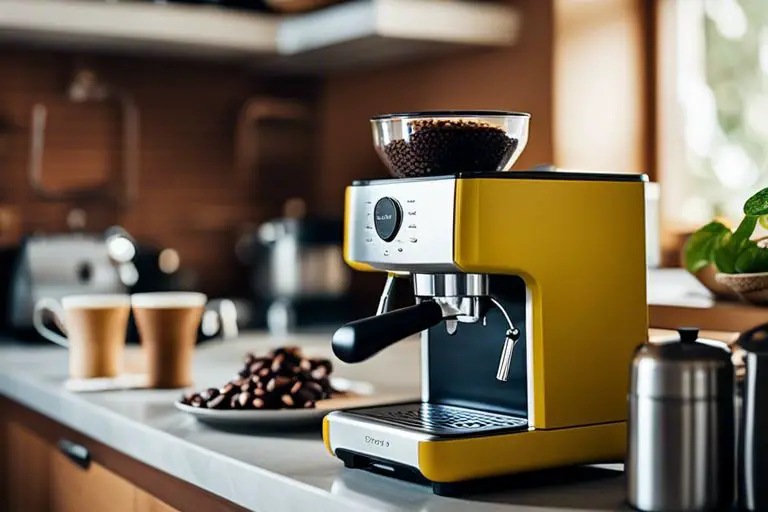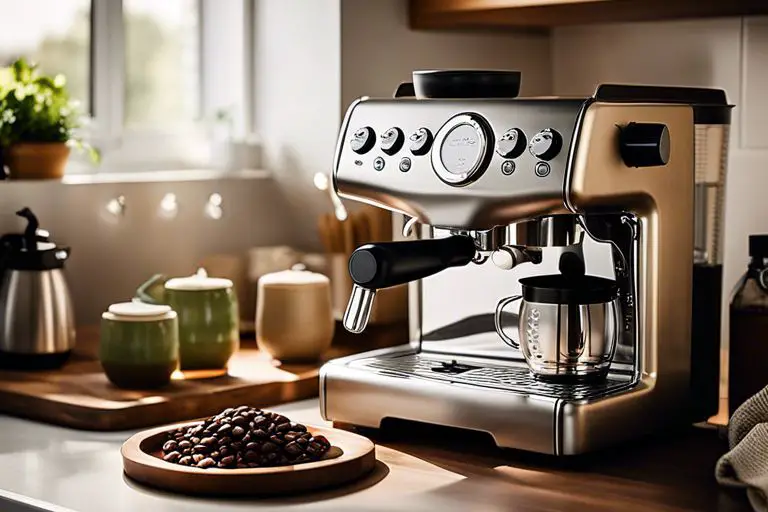Instant coffee is highly concentrated coffee that has already been made once. The water is removed and then it’s frozen at a very low temperature so that when hot water is added it turns back into coffee “instantly”.
To get to the bottom of what instant coffee is you need to understand the process it goes through to get into the jar that you pick up from the supermarket shelf. Is all instant coffee the same? Is it worth spending more on higher priced freeze-dried coffee? What are the alternatives to instant and do different brewing methods make coffee taste better?
Most people don’t realise that the jar of powder or granules that you use to make your daily coffee is actually second hand coffee! Made in advance and prepared ready for use for one reason only – convenience.
But at what cost? How much flavour is compromised when you use instant coffee? What is the quality of the coffee that is being used?
Most people drink coffee every day. It is the most traded food or drink commodity in the world and billions of cups are drunk daily.
If you are going to drink something every day it’s well worth investigating if you can make it a better experience and maximise the enjoyment rather than just guzzling it down because it has become a daily habit and something that gives you an energy boost to start your day from the caffeine it contains.
How is instant coffee made?
It all starts with raw green coffee beans that are imported from all over the world.
They are roasted in ovens at around 200 degrees for 15-20 minutes. The length of time the coffee beans are roasted for determines the colour and whether they are a light, medium or dark roast.
Generally speaking, the longer a bean is roasted for, the more of the flavour is roasted out of it and because instant coffee tends to be made from lower-quality beans, the beans are roasted for longer and are therefore darker in colour.
Machines are then used to grind the beans down into a fine powder consistency and then a combination of steam and pressure literally brews the coffee and turns it into the drink you are familiar with drinking on a daily basis.
From this point on everything that happens starts to impact on the overall flavour that you get when brewing a freshly ground cup of coffee yourself. Flavour gets compromised for convenience.
In order to preserve it so that you can drink it months or even years later, all of the water has to be removed and the first stage of that is to heat it so that it is still in liquid form but it is condensed so that becomes like a liquid film.
The next stage is to freeze it to try and lock in the flavour. The condensed coffee extract is subjected to temperatures of -50 degrees Celsius and then broken up into small pieces or granules that you will be familiar with seeing in your jar of supermarket instant coffee.
The most important part takes place at the end. At this point, there is still a good amount of water still inside the coffee and it needs to be removed completely otherwise it can’t be preserved until you drink it and all the flavour will be lost.
The coffee is heated in a vacuum environment in a process called sublimation where the remaining water vaporises without dissolving the coffee that has previously been frozen and keeps the coffee flavour locked in.
The coffee granules will then be stable at normal room temperature and they are packed and vacuum sealed in order to retain their freshness for as long as possible.
It’s not uncommon for the shelf life of instant coffee to be at least one year or more due to all of the water being removed.
Instant coffee is definitely the easiest and cheapest way to make a cup of coffee but it is without a doubt far from the most enjoyable way to savour one of the worlds tastiest beverages.
If you take some time to explore the other options available to you, then you can enjoy the same quality of coffee that you get in Starbuck or Costa in the comfort of your own home without having to pay anything remotely close to the prices they charge in the high street coffee chains and you will never need to drink another cup of instant coffee again.
What is the best way to get great tasting coffee?
If you use freshly roasted coffee beans to make your own coffee you will get a flavour far superior to any instant coffee you have ever tasted.
The first thing to do if you want great tasting coffee is to buy coffee beans and not instant or ground coffee.
You can start with the cheap supermarket beans to get used to how much better it is to use coffee beans instead of instant coffee and then you can progress to gourmet coffee once you have mastered the basics.
Here is an article on how to choose and buy coffee beans
If you don’t have a clue what you should do with a coffee bean to turn it into a cup of coffee it really is very simple indeed.
First of all, you don’t need to invest much money to hugely improve your coffee drinking experience.
You can start with a coffee grinder that costs a tenner and a cafetière for a tenner or a stovetop espresso machine for around about the same kind of money.
If you wouldn’t know where to start when it comes to a coffee grinder or a cafetière these guides will explain everything you need to know:
How to make coffee with a cafetiere
Using a cafetière or a filter coffee machine will produce a coffee that looks similar to what you get when you add water to instant coffee but it will taste much better.
If you like espresso based drinks such as cappuccino or latte then you will need to buy yourself an espresso machine.
Don’t be scared off by those huge complex devices that you see when you go into a coffee shop. You can spend thousands of pounds on an espresso machine but if you are just starting out you can easily pick one up for under £100.
Check out the best cheap espresso machines
Espresso machines like the ones you see in coffee shops take a little bit of getting used to and you will need to spend a couple of minutes making a coffee each time so if you don’t want to go down that road there are other more convenient ways to make a cup of coffee that beats instant hands down.
Even easier and quicker than making a cup of instant coffee is by using a pod coffee machine.
Pre-ground coffee is vacuum-sealed into a coffee pod ready to use. You simply pop the pod into the machine, press one button and the coffee is delivered in under a minute.
There are 3 brands that dominate the coffee pod machine market, Nespresso, Tassimo and Dolce Gusto and there is no need to look beyond these 3 if you want better quality than instant but you want to be able to make your coffee instantly.
See the best coffee pod machines
Pod coffee machines provide a better quality coffee than instant but they use pre-ground coffee. To get the best taste you need to use freshly ground coffee beans so if you want to get the freshest tasting coffee and you also want convenience then you should consider a bean to cup coffee machine.
This type of coffee machine will grind the beans for you and produce a double espresso within 60 seconds.
You will have to pay a bit more than the other methods for a bean to cup coffee machine because you get ultimate freshness and convenience.
Here is an article to help you understand exactly what a bean to cup coffee machine is and some options to consider:
How to choose a bean to cup coffee machine
There are so many different ways to make a cup of coffee that is miles better than using instant and hopefully some of the methods we describe above will encourage you to give it a go.
How do you make a cup of instant coffee?
Add some instant coffee to a cup and add hot water. Because it is concentrated you will normally need no more than a heaped teaspoon and 200ml of water for a nice strong coffee.
There is no exact recipe for the perfect instant coffee because everyone’s taste is different so if you prefer a milder coffee then use less coffee to start with and if you prefer something stronger, add more.
Unfortunately, most instant coffee is produced with low quality coffee beans and the process that it goes through in order to turn it into an ultra-convenient instant drink can make the coffee taste harsh and bitter.
Most people use milk and sugar to mask the poor flavour of most cheap, instant coffees.
It is well worth exploring one of the many alternative methods described above for brewing coffee.
Is instant coffee bad for you?
The process that coffee goes through in order to turn it into instant coffee makes no difference to the effect that it can have on you from a health perspective.
There have been extensive scientific studies showing that coffee has properties that have a positive effect on health and well being.
Here is a detailed article that answers the question, is coffee good for you?
Is freeze-dried coffee the same as instant coffee?
Freeze-dried is the process that instant coffee goes through to turn it into the powder you use to make yourself a cup of coffee.
It is most widely known as “instant coffee” but is also known as “freeze-dried”. They are both the same thing.
Who invented instant coffee?
You’d think that instant coffee has been around forever and for most of us it has because it has been around during our lifetime but it was only marketed and available for purchase from around 1910 shortly after the freeze-dried method was invented.
Nescafe, who remains the largest producer of instant coffee in the world were the first to bring it to the mass market after launching the brand in 1938.
Here is a short video showing the process that coffee goes through to create a jar of instant:




